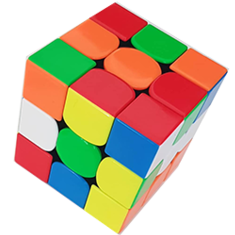Making a Pattern file
A pattern file is a text file, which has a few simple rules.
If it is to be a standalone file, then the first line of the file must be *(File-name)(,pattern description if needed). The file name cannot have any spaces, but for clarity it can have underscores.
The second and subsequent lines are the description of the lines that form the hatch pattern, and follow the data format shown in the diagram. The angle, coords and dimensions can be taken from the working drawing. The length of a data line is limited to 80 characters. There must be a blank line, without any data, at the end of the file.
A stand alone file has to be stored in a folder which is pathed for AutoCAD, so it is available in the Custom patterns. It can also be put in the main pattern file ACAD.PAT or ACADISO.PAT but that is trickier when you are trying to write the pattern.
My procedure was to start a text editor with the pattern file loaded, and also start AutoCAD, then one can hatch, write a line into the pattern file and save it, and then (having erased the first hatch) hatch again. AutoCAD always takes the most recent pattern file so one sees whether the last line is doing what it should.
I thought a few pictures would explain everything, but if I should have taken shortcuts, please seek further clarification.
I have also added my whole hatch pattern file.
*Quilt,satin quilt pattern
0,-2.25,0,0,15.36396103,4.5,-3.18198052
0,1.59099026,1.59099026,0,15.36396103,4.5,-3.18198052
0,1.59099026,-1.59099026,0,15.36396103,4.5,-3.18198052
0,5.43198052,3.18198052,0,15.36396103,4.5,-10.86396104
0,5.43198052,-3.18198052,0,15.36396103,4.5,-10.86396104
0,1.59099026,3.84099026,0,15.36396103,2.25,-7.68198052,2.25,-3.18198052
0,1.59099026,-3.84099026,0,15.36396103,2.25,-7.68198052,2.25,-3.18198052
0,3.18198052,5.43198052,0,15.36396103,2.25,-4.5,2.25,-6.36396103
0,3.18198052,-5.43198052,0,15.36396103,2.25,-4.5,2.25,-6.36396103
0,0,-7.68198052,0,15.36396103
45,-1.59099,-1.59099,-10.86396,10.86396,4.5,-3.18198,2.25,-6.36396,2.25,-3.18198
45,0,2.25,-10.86396,10.86396,4.5,-9.54594,4.5,-3.18198
45,2.25,0,-10.86396,10.86396,4.5,-9.54594,4.5,-3.18198
45,6.09099,1.59099,-10.86396,10.86396,10.86396,-10.86396
45,1.59099,6.09099,-10.86396,10.86396,10.86396,-10.86396
45,3.84099,-1.59099,-10.86396,10.86396,2.25,-14.04594,2.25,-3.18198
45,-1.59099,3.84099,-10.86396,10.86396,2.25,-14.04594,2.25,-3.18198
45,-1.59099,-9.27298,-10.86396,10.86396,4.5,-6.36396,4.5,-6.36396
90,0,-2.25,0,15.36396103,4.5,-3.18198052
90,-1.59099026,1.59099026,0,15.36396103,4.5,-3.18198052
90,1.59099026,1.59099026,0,15.36396103,4.5,-3.18198052
90,-3.18198052,5.43198052,0,15.36396103,4.5,-10.86396104
90,3.18198052,5.43098052,0,15.36396103,4.5,-10.86396104
90,-3.82099026,1.59099026,0,15.36396103,2.25,-7.68198052,2.25,-3.18198052
90,3.84099026,1.59099026,0,15.36396103,2.25,-7.68198052,2.25,-3.18198052
90,-5.43098052,3.18198052,0,15.36396103,2.25,-4.5,2.25,-6.36396103
90,5.43198052,3.18198052,0,15.36396103,2.25,-4.5,2.25,-6.36396103
90,7.68098052,0,0,15.36396103
135,1.59099,-1.59099,-10.86396,10.86396,4.5,-3.18198,2.25,-6.36396,2.25,-3.18198
135,-2.25,0,-10.86396,10.86396,4.5,-9.54594,4.5,-3.18198
135,0,2.25,-10.86396,10.86396,4.5,-9.54594,4.5,-3.18198
135,-1.59099,6.09099,-10.86396,10.86396,10.86396,-10.86396
135,-6.09099,1.59099,-10.86396,10.86396,10.86396,-10.86396
135,1.59099,3.84099,-10.86396,10.86396,2.25,-14.04594,2.25,-3.18198
135,-3.84099,-1.59099,-10.86396,10.86396,2.25,-14.04594,2.25,-3.18198
135,9.27298,-1.59099,-10.86396,10.86396,4.5,-6.36396,4.5,-6.36396

